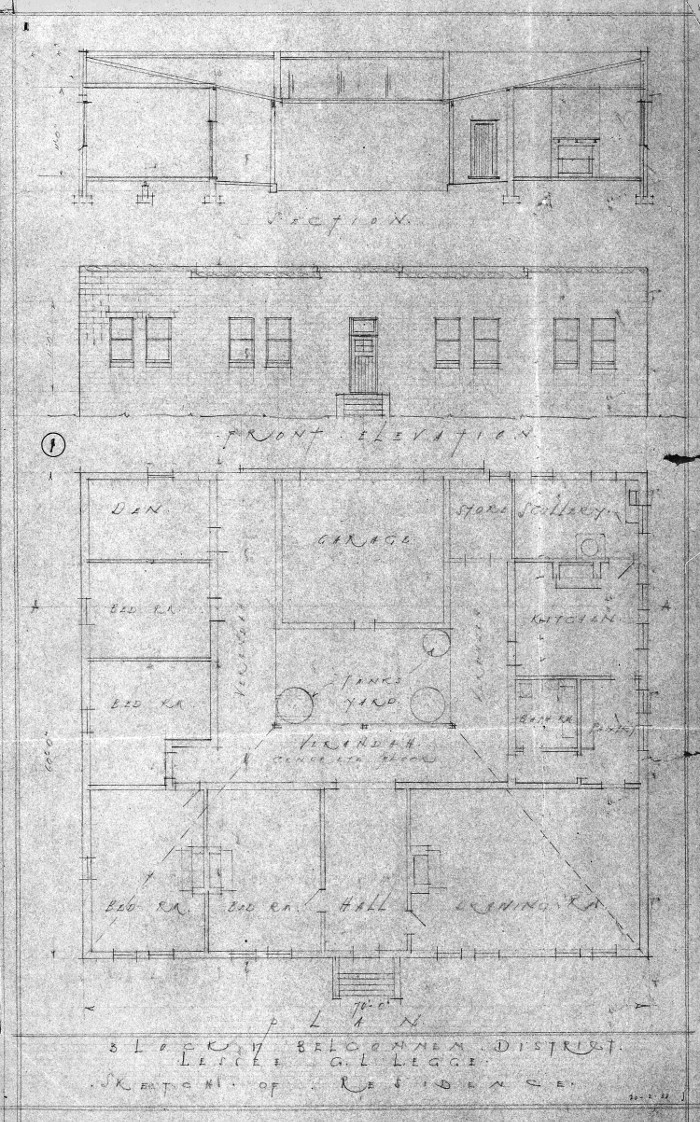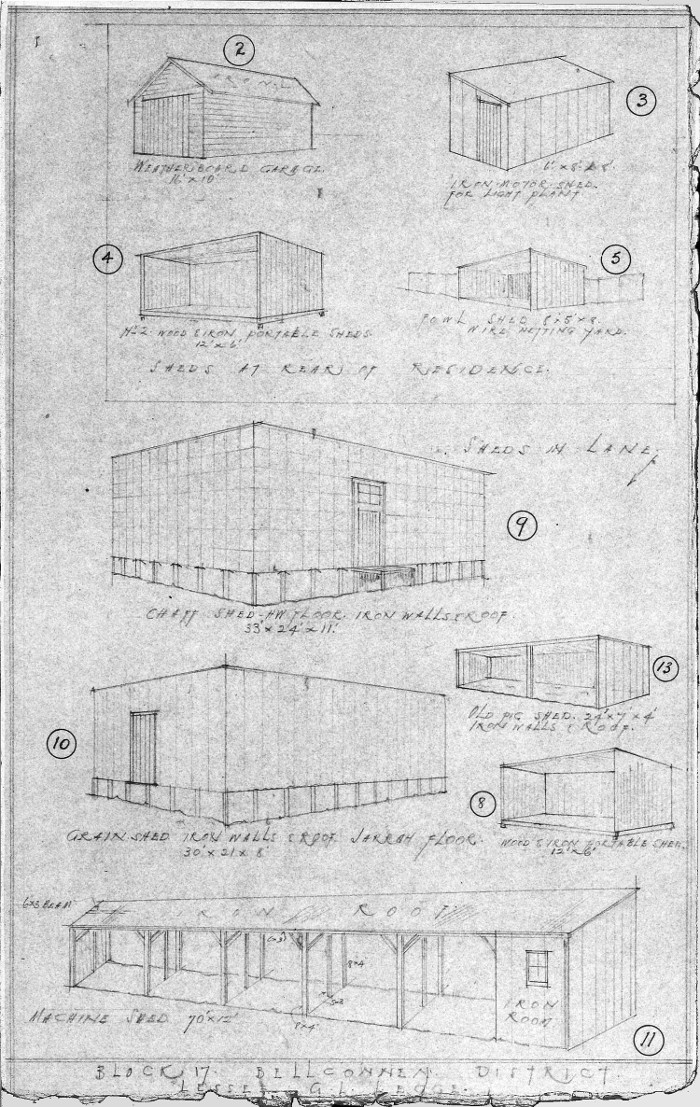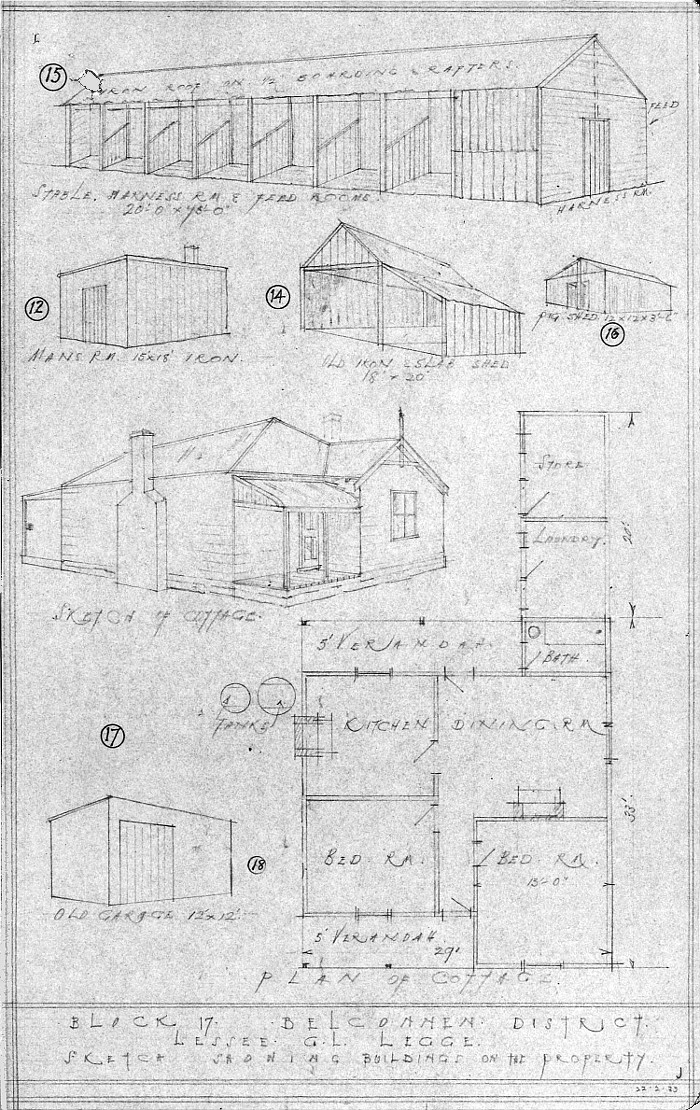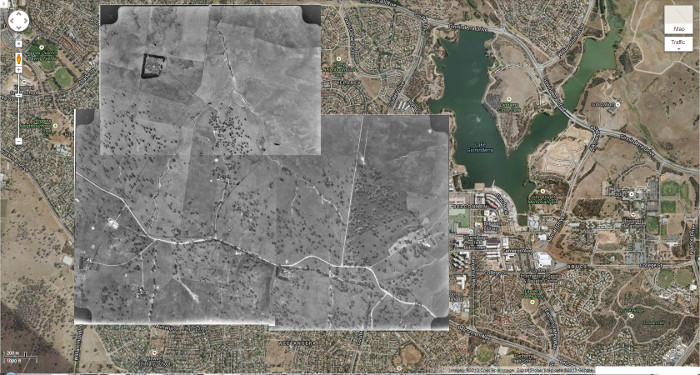James Gordon Legge
Block 17 Belconnen District – Property Name: 'Cranleigh'
James Gordon Legge was born in 1863 in London, his family moving to Australia in 1878. In 1885, he joined the 3rd New South Wales Infantry regiment as a Lieutenant attaining the rank of Captain by 1894. Legge had an impressive military career, climbing through the ranks to the position of Major General. He made a significant contribution to Australia’s military forces, including assisting with Kitchener’s Defence Scheme in 1909 and leading a division in France on the Western Front in 1916.
Perhaps Legge’s most enduring contribution to Australia’s military history was during his assistance to Kitchener. Kitchener’s Defence Scheme has been said to really be Legge’s Defence Scheme, given the work he undertook. His work was instrumental in the establishment of the Royal Military College at Duntroon in 1911. Legge also became Commandant of RMC Duntroon in 1920.
Legge’s decision to retire in the Federal Capital Territory in the early 1920s occurred at the beginning of Canberra development. His enforced return to civilian life before reaching the prescribed retiring age deprived Legge of a military pension. For this reason, with the assistance of the Soldier Settlement Scheme, he and his wife Annie Frances took up the 400 acre (162 hectare) Belconnen Block 17 and turned to pig-farming. He named the property Cranleigh Farm after his school in England and his former home in Sydney.
For Legge, part of the appeal of Belconnen Block 17 was it's distance from the construction activity taking place in the city area and the early suburbs being built for public servants. It also was on the route of the proposed Canberra-Yass railway that was to cross the northern part of the Block.
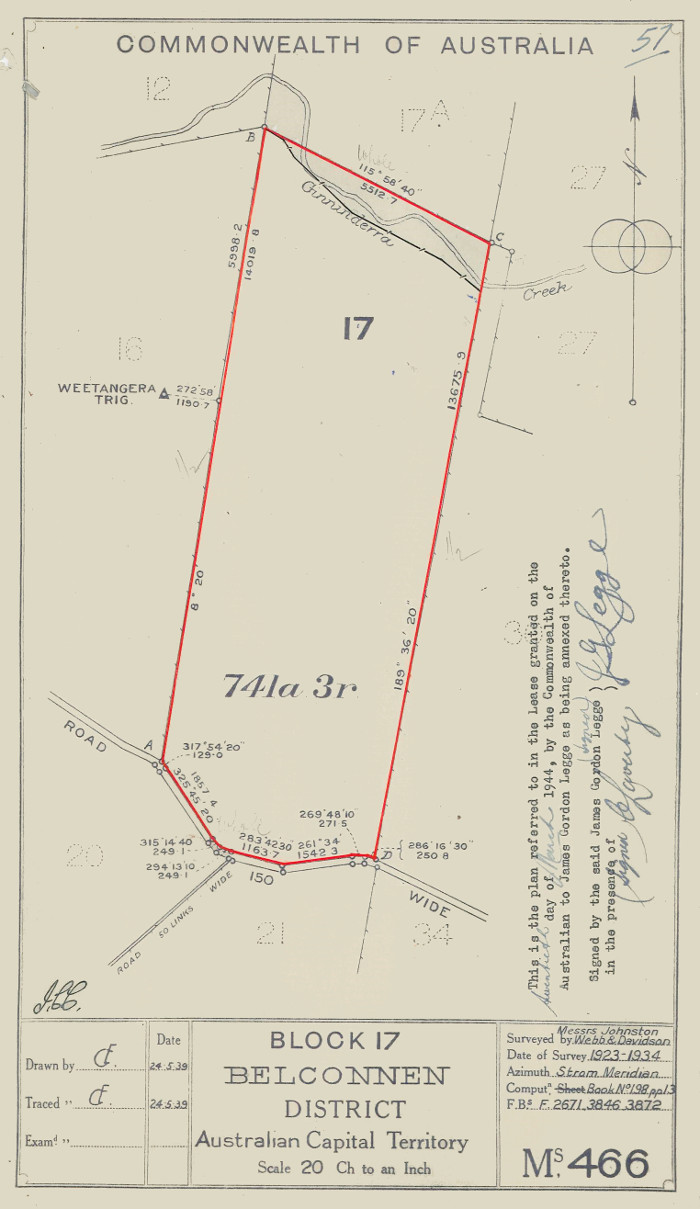
Plan of Belconnen Block 17.
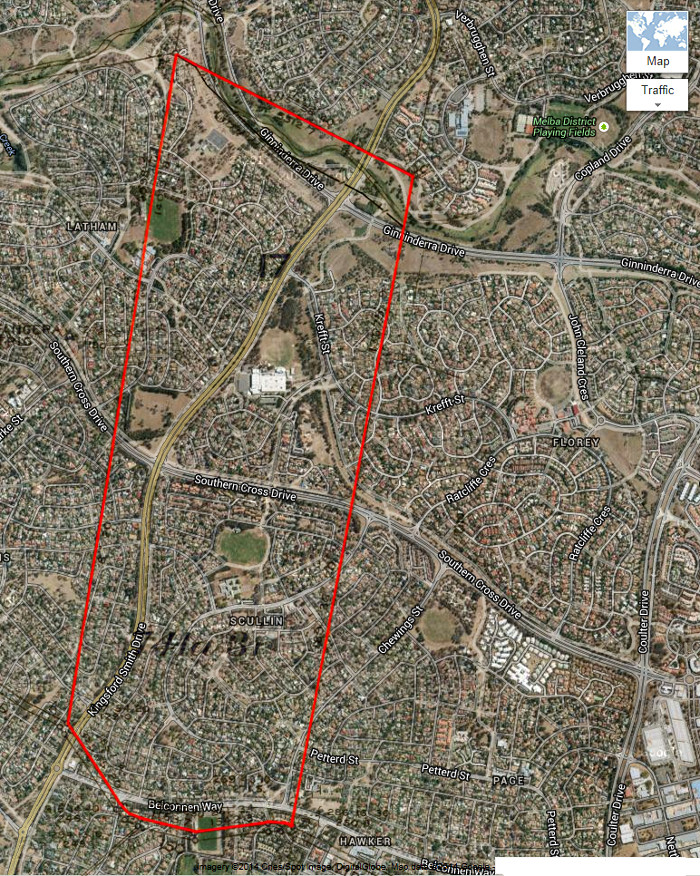
Google Maps image of area c2013 with Belconnen Block 17 boundary in red.
Soon after taking over the lease of the block, Legge began the construction of an unusual residence. The style he adopted was said to have derived from houses he had seen in India early in his military career. In its external appearance, the house was square with a flat roof resembling a fort or block house construction. It was built of concrete blocks moulded on site with sand from Ginninderra Creek. Internally there was a central verandah courtyard surrounded by ten rooms with each room having an entrance to the courtyard. The house was completed in 1923.
Sketch of Residence on Belconnen Block 17. Click on image for larger view.
Also constructed in 1923 were cottages for workmen and a manager as well as stables, a machine shed and pig pens. It is evident from these sketches that Legge envisaged a substantial pig farming operation. This was in part based on the planned Canberra-Yass railway running across part of his property that would have assisted transporting his pigs to market. This railway was never constructed, one of the reasons Legge's pig farming venture failed. Drought also put an end to his later potato farming venture.
Sketches of other buildings on Stromlo Block 17. Click on image for larger view.
Sketches of other buildings on Stromlo Block 17. Click on image for larger view.
Legge lived at Cranleigh until 1947 when ill health forced him to move to Melbourne to live with his son. His wife, Annie, had left three years earlier due to her own ill health and had lived in Melbourne, then Sydney, under the care of family members. Legge received news of his wife’s death in September 1947 while he was ill with bronco-pneumonia in a private hospital. He died little more than a fortnight later on the 18th September aged 84.
Aerial photo of Belconnen Block 17 taken 15th May 1961. Cranleigh is located within the square planting of trees.
Click on image for larger view.
Aerial photos of Belconnen District showing Weetangerra Road taken 15th May 1961 overlayed onto Google Maps c2013.
Click on image for larger view.
By 1961, only the foundations of Cranleigh Farm and surrounding windbreak were left. Legge planted the windbreak of pine trees to shelter the homestead and a small orchard. The house was demolished in 1951 and building remains were cleared from the site in 1986 to form an urban park.
The park is dominated by Legge's pines with approximately 161 remaining in multiple rows delineating the parks borders on the north, south and west sides. There are many vacant spaces within the rows, indicating the previous existence of more trees than those that exist today. A grove of fruit trees in the northern half of the park is the remains of an orchard planted by Legge. These trees were planted in three or four rows. Approximately 20 trees remain.
Sources
- ArchivesACT: Government Property & Tenancy Registers - Belconnen Block 17 (
 PDF 466Kb)
PDF 466Kb) - ArchivesACT: Rate Book : Territory for the Seat of Government - 1927 (
 PDF 17.8Mb) - 1928 (
PDF 17.8Mb) - 1928 ( PDF 18.7Mb) - 1929 (
PDF 18.7Mb) - 1929 ( PDF 8.88Mb)
PDF 8.88Mb) - ArchivesACT: TL6245 (Part 1) - Block 17 Belconnen - Major-General James G. Legge
- ArchivesACT: TL6245 (Part 2) - Block 17 Belconnen - Major-General James G. Legge
- ArchivesACT: TL7839 - Soldier Settlers Advance - Blocks 17 & 17A Belconnen - J.G. Legge
- NAA: (B2455) First Australian Imperial Force Personnel Dossiers, 1914-1920: http://discoveringanzacs.naa.gov.au/browse/person/349257
- General Bridge's Successor. The Farmer and Settler, 21 May 1915, p.2: http://nla.gov.au/nla.news-article116700708
- Death of Mrs A.F. Legge. The Canberra Times, 3 September 1947, p.6.: http://nla.gov.au/nla.news-article2724174
- Obituary. The Canberra Times, 4 September 1947, p.3: http://nla.gov.au/nla.news-article2724296
- Family Notices. The Canberra Times, 19 September 1947, p.4: http://nla.gov.au/nla.news-article2725505
- Death of Lt.-Gen. Legge. The Canberra Times, 19 September 1947, p.4: http://nla.gov.au/nla.news-article2725517
- Australian Dictionary of Biography : James Gordon Legge: http://adb.anu.edu.au/biography/legge-james-gordon-7160
- Canberra Tracks - Cranleigh Homestead Site: http://www.canberratracks.act.gov.au/track6-cranleigh-homestead.php
- ACT Planning & Land Authority: Legge Road
- Heritage (Decision about Provisional Registration of the site of General Legge’s House, Cranleigh, Latham) Notice 2011: http://www.legislation.act.gov.au/ni/2011-643/current/pdf/2011-643.pdf (
 PDF 1.40Mb)
PDF 1.40Mb)

